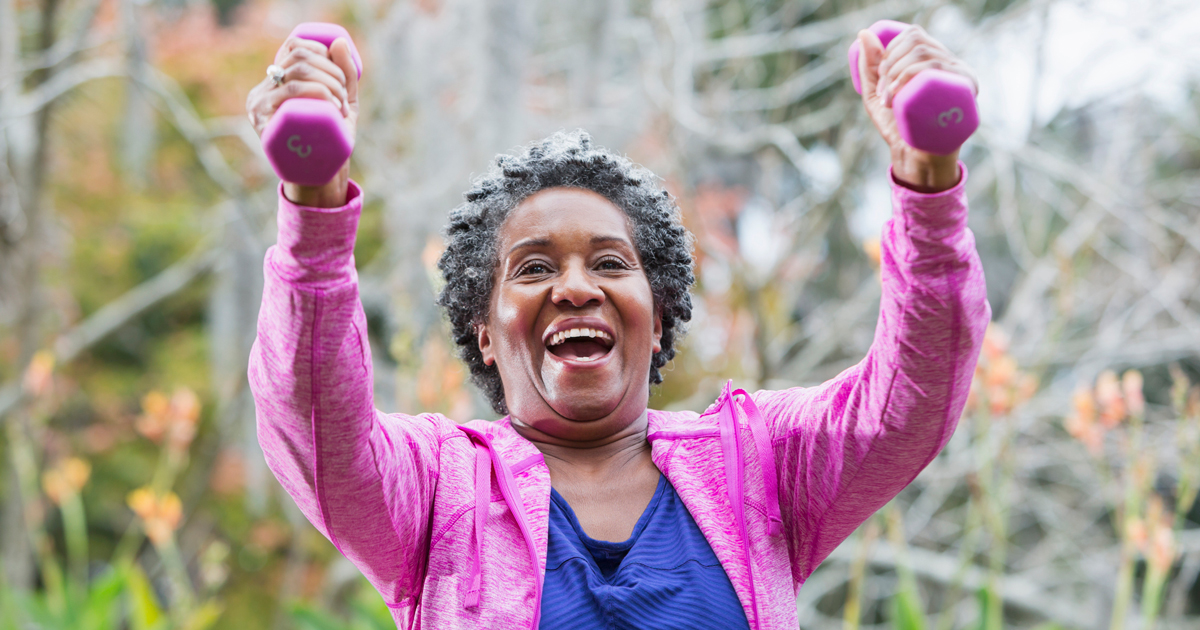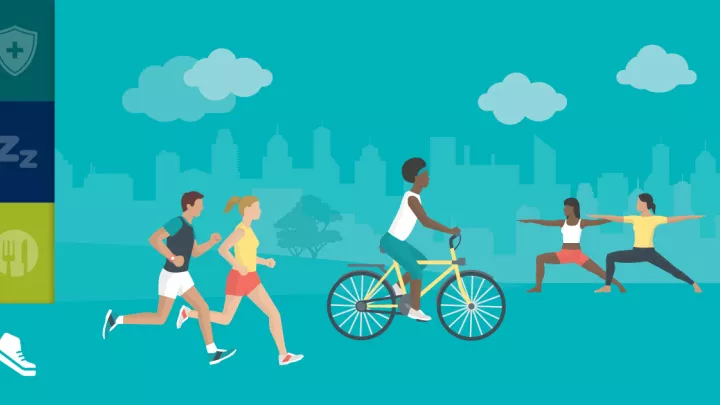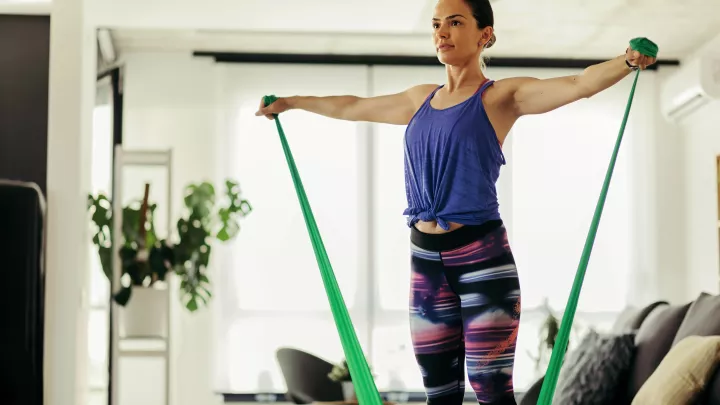Strength training for women has many benefits, and it’s never too late to start

It's common knowledge that exercise benefits physical and mental health. Research shows that strength training for women, in particular, is beneficial in unique ways and doesn't have to mean lifting heavy weights like a bodybuilder.
Strength training for women involves using your body weight, dumbbells or other weights or leveraging resistance bands. Because lean muscle mass diminishes with age, adding resistance to a fitness routine can help women get stronger, leaner and healthier at every age.
The benefits of strength training for women
"Strength training helps improve a woman's overall health in numerous ways," says Emily Hill Bowman, MD, Nebraska Medicine adult primary care provider. "Besides the many health benefits, women can also lessen their risk for conditions unique to them such as osteoporosis after menopause and pregnancy complications like gestational diabetes, preeclampsia and postpartum depression."
Osteoporosis has risen to 18% for women over age 50. Urinary incontinence affects between 25% and 45% of women over the age of 20 and over 40% of women over 60. Heart disease is the leading cause of death for women in the United States, causing about 1 in 5 female deaths. Today, about 1 in 16 women age 20 and older (6.2%) have coronary heart disease.
Strength training can make a difference and help improve these statistics.
The benefits of strength training include a decreased risk of:
- Heart problems, including high blood pressure, high cholesterol and stroke
- Diabetes and blood sugar regulation
- Developing dementia as you age, including Alzheimer's disease
- Certain cancers due to maintaining a healthy weight
- Bone thinning and osteoporosis, particularly after menopause
- Hot flashes in menopause
- Common urinary issues
- Injury due to falls
Strength training also benefits women by helping to:
- Manage weight and increase metabolism
- Enhance the quality of life and help you maintain independence as you age
- Manage chronic conditions like arthritis or back pain
- Boost mental health and sharpen thinking skills
- Improve sleep quality
- Relieve pain, improve posture and balance
Strength training can help women with pelvic floor issues and diastasis recti
"A woman's pelvic floor muscles can weaken and cause problematic symptoms over time," says Dr. Hill Bowman. "Strengthening the pelvic floor can help with urinary incontinence or leaking, vaginal issues and bowel movement problems. It can be helpful to see a pelvic floor physical therapist so they can help you understand what muscles to isolate with appropriate strengthening exercises."
Some women may experience diastasis recti which separate and pulls the abdominal muscles apart during pregnancy and postpartum due to stretching. Strength training and resistance exercises can help strengthen the pelvic floor and work to tighten the affected muscles. Because specific exercises can make diastasis recti worse, work with a fitness professional or physical therapist who has experience with the condition.
How to get started: 5 tips to set yourself up for success
The American Heart Association recommends strength training two times per week and cardiovascular exercise two and a half hours per week.
"It's never too late to start getting into exercise," says Dr. Hill Bowman. "Strength training at any age is helpful to your health, and what you build now pays dividends later. Start slow and increase over time. Walking is a great place to start, along with yoga, pilates or other low-impact ways to build muscle. The key is to choose exercises you enjoy on your own or with friends so you can stick with it."
Start by adding strength and resistance to your fitness routine once or twice per week, depending on your current health. Once you've started, slowly build up to this goal:
- Strength training two days per week for 15 to 30 minutes each day
- Cardiovascular or aerobic exercise two and one-half hours per week with moderate intensity, or 75 minutes of high intensity
Set yourself up for success and make it fun
Move your body in any way that's enjoyable to you. You're not limited to walking on a treadmill or a form of exercise you hate. Get outside and go on a hike, join a dance class, get an online fitness subscription or initiate enjoyable activities with friends.
Help yourself by:
- Putting it on your calendar and commit to it.
- Telling your friends or family for accountability.
- Getting everything set up the day before so you're ready to go when the time comes.
- Using a tracking app to help track how you're doing
- Considering to exercise with a friend or a group to motivate you.
"As you exercise, listen to your body," advises Dr. Hill Bowman. "Start slower with less intensity. You can always build from there. If you push too quickly or don't use proper form, you may put yourself at risk for injury. Listen to your body and if something hurts, slow down. Begin again slowly to rebuild your endurance."
Fitness options are nearly endless these days
Gyms and workout clubs are great, but there are many ways you can also exercise at home and outside without the expense and travel. Get some fresh air and start walking, adding light weights as you get stronger. Search online for free yoga guidance, find a fitness app or online subscription for workouts you enjoy or explore free fitness videos to guide you.







